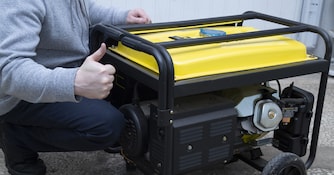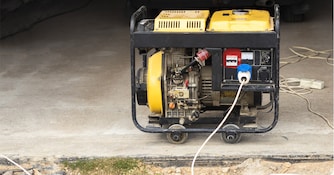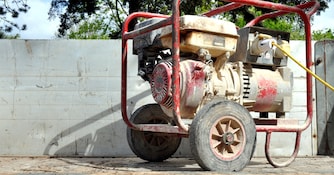
Emergency Generator Buyer's Guide
We don't realize how much we rely on electricity until it's gone. Without power, basements can flood, security systems can falter, and home businesses can fail.
For these reasons, a portable generator can ease our minds and be a real home-saver, acting as an emergency backup power system during an outage.
We're making peace-of-mind simple by helping you pick the right-size emergency generator for your home. Whether you need only a few lights or all your gadgets powered during a hurricane, this guide breaks it down for you.
Size Your Emergency Generator
The best way to size your generator is to use our free portable generator sizing calculator, which will calculate the power needs of all your appliances.
Below, we give you an idea of the different emergency generator size options out there. We don't include small generators because they aren't much use when it comes to backing up essential appliances during a power outage.
| Emergency Generators | Medium | Large | X-Large |
|---|---|---|---|
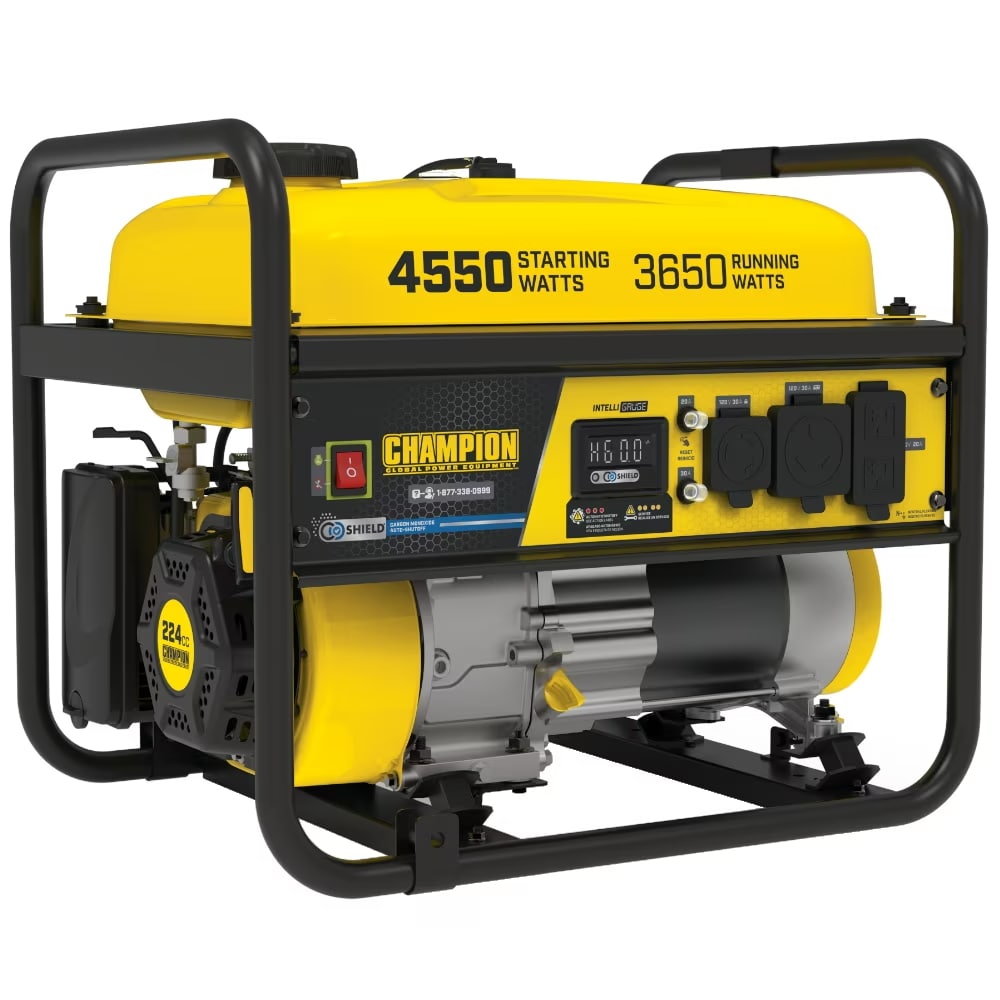 | 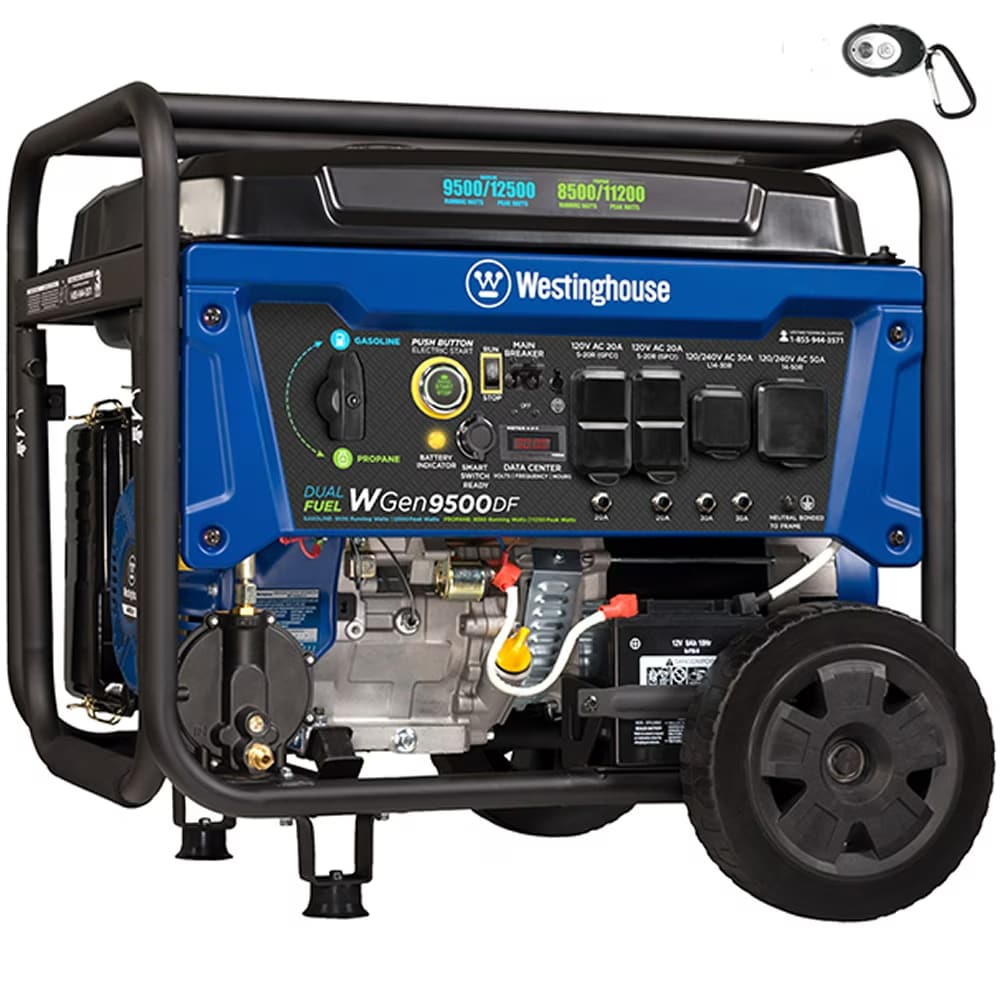 | 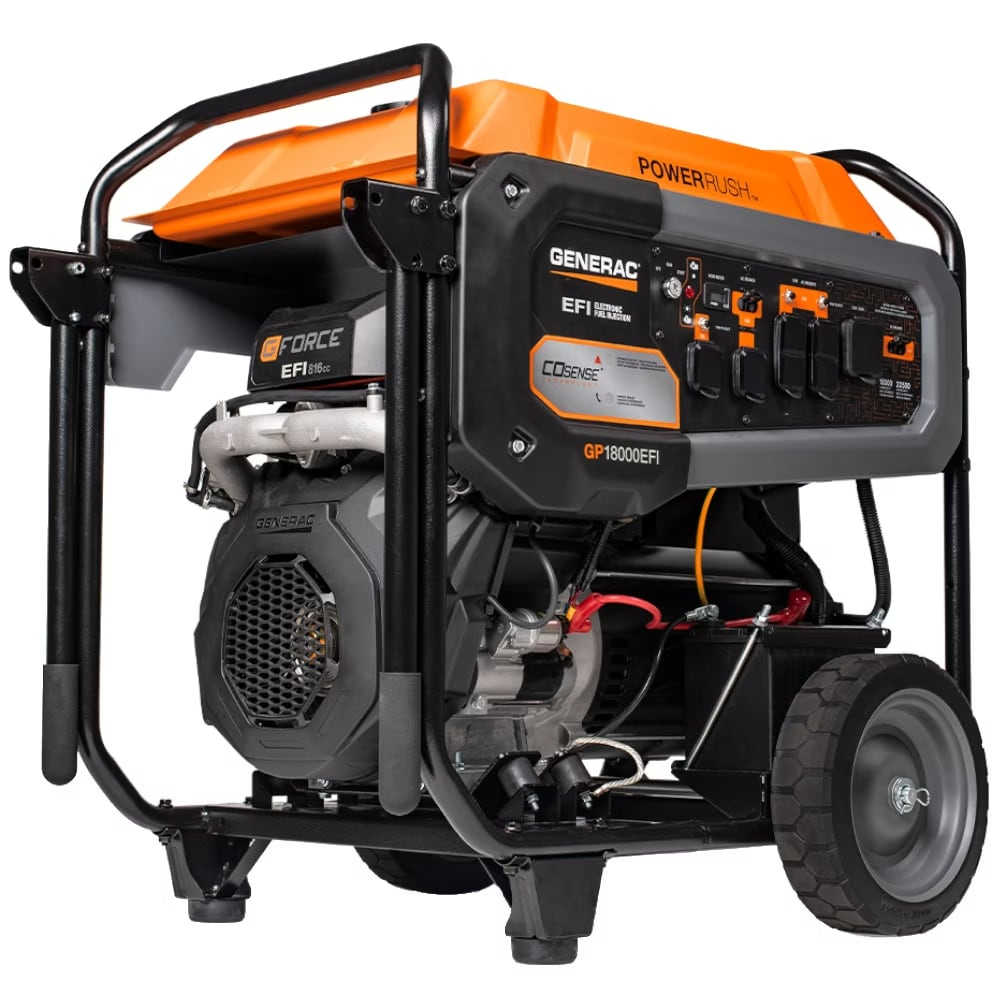 | |
| Powers | Essential Appliances | Multiple Rooms | Homes |
| Connection | Extension Cords | Cords or Switches | Transfer Switches |
| Watts | 1,000 - 6,000 | 6,000 - 10,000 | 10,000 - 20,000 |
| cc | 168 - 429cc | 438 - 480cc | 530 - 992cc |
| Gas Tank Size | 3 - 8 Gal. | 5.7 - 9 Gal. | 8 - 16 Gal. |
| Starter | Recoil or Electric | Recoil or Electric | Electric |
Medium Emergency Generators
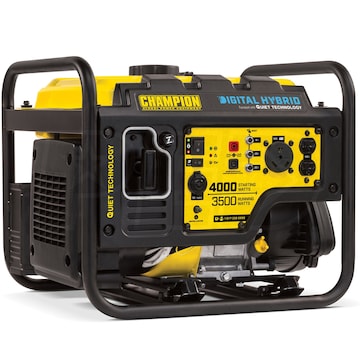 Don't let the name fool you. Medium emergency generators (1,000-5,000 watts) may be relatively small, but they pack a good punch.
Don't let the name fool you. Medium emergency generators (1,000-5,000 watts) may be relatively small, but they pack a good punch.
Unlike smaller camping generators, which can only power a light or two, medium-sized emergency portable generators can power multiple survival appliances, such as your refrigerator, sump pump, and furnace fan.
Inverter generators, which produce clean power and are safe to use with electronics, fall under the medium power range. Although they cost more than standard, open frame generators, they are lighter, more compact, and quieter.
Most homeowners simply run the generator outside and string extension cords through an open door or window to the inside appliances.Since medium emergency generators produce limited electricity, you’ll need to manage how many appliances are connected to the generator so it doesn’t overload. For example, run the refrigerator for an hour. Then run the well pump. Then run the deep freezer.
Large Emergency Generators
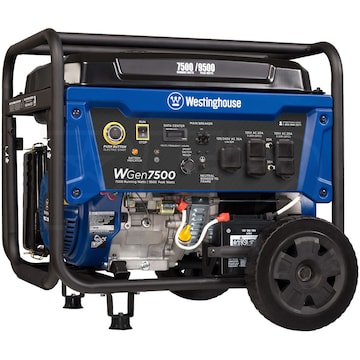 If you want to thrive instead of just survive, consider a large emergency portable generator (6,000-8,000 watts) instead. You'll be able to run all the essentials plus some extras like a microwave, washing machine, and coffee maker.
If you want to thrive instead of just survive, consider a large emergency portable generator (6,000-8,000 watts) instead. You'll be able to run all the essentials plus some extras like a microwave, washing machine, and coffee maker.
Although you can still run extension cords from the generator, you won't be able to tap its full potential. Instead, large generators work best with manual transfer switches that can restore power in up to 10 circuits in your main electrical panel. In other words, they can energize multiple rooms in your home (minus a central air conditioner).
Extra-Large Emergency Generators
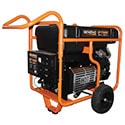 If you want the strength of a small home standby generator without being tied down, get an extra-large portable emergency generator (10,000+ watts).
If you want the strength of a small home standby generator without being tied down, get an extra-large portable emergency generator (10,000+ watts).
Extra-large models can power all of your essentials, plus more, simultaneously. They also can have much higher surge wattages, which means they're capable of starting many high-powered motorized appliances.
While an electric start is standard on most extra-large models, they are not automatic. You still have to manually start the unit. That's why, for long-term outages, you will want a more permanent solution, such as a home standby or whole house generator.
When Emergencies Strike, Be Ready
With an emergency generator, you'll be ready for the next power outage. While your neighbors sit in the dark, you'll be doing just fine.
For more help choosing the perfect emergency generator for your home, please contact us at 800-800-3317.
Main | Emergency Portable Generators | Inverter Generators | Recreational Generators | Professional Generators | Manual Transfer Switches | Portable Generator Sizing Calculator


